Ditapis dengan

E-book The Story of Life in 25 Fossils: Tales of Intrepid Fossil Hunters and …
Every fossil tells a story. Best-selling paleontology author Donald R. Prothero describes twenty-five famous, beautifully preserved fossils in a gripping scientific history of life on Earth. Recounting the adventures behind the discovery of these objects and fully interpreting their significance within the larger fossil record, Prothero creates a riveting history of life on our planet. The t…
- Edisi
- -
- ISBN/ISSN
- 9780231539425
- Deskripsi Fisik
- 404 halaman
- Judul Seri
- -
- No. Panggil
- 560 PRO t
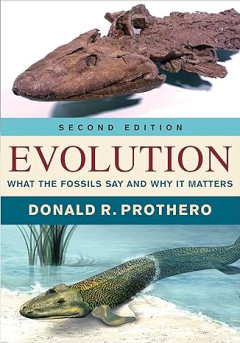
E-book Evolution: What the Fossils Say and Why It Matters
Donald R. Prothero’s Evolution is an entertaining and rigorous history of the transitional forms and series found in the fossil record. Its engaging narrative of scientific discovery and well-grounded analysis has led to the book’s widespread adoption in courses that teach the nature and value of fossil evidence for evolution. Evolution tackles systematics and cladistics, rock dating, neo-D…
- Edisi
- -
- ISBN/ISSN
- 9780231180641
- Deskripsi Fisik
- 455 halaman, ilus.
- Judul Seri
- -
- No. Panggil
- 576.8 PRO e
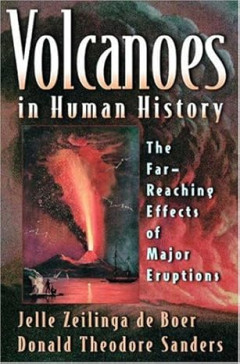
E-book Volcanoes in Human History: The Far-Reaching Effects of Major Eruptions
When the volcano Tambora erupted in Indonesia in 1815, as many as 100,000 people perished as a result of the blast and an ensuing famine caused by the destruction of rice fields on Sumbawa and neighboring islands. Gases and dust particles ejected into the atmosphere changed weather patterns around the world, resulting in the infamous ''year without a summer'' in North America, food riots in Eur…
- Edisi
- -
- ISBN/ISSN
- 9780691050813
- Deskripsi Fisik
- 316 halaman, ilus.
- Judul Seri
- -
- No. Panggil
- 551.21 BOE v

E-book Ring of Fire: An Encyclopedia of the Pacific Rim's Earthquakes, Tsunam…
n March 11, 2011, a magnitude 9.0 earthquake struck off Japan's coast, triggering a powerful tsunami. The massive destruction that resulted proved that not even sophisticated, industrialized nations are immune from nature's fury. Written to take some of the mystery out of the earth's behavior, this encyclopedia chronicles major natural disasters that have occurred around the Pacific Rim, an are…
- Edisi
- -
- ISBN/ISSN
- 9781610692960
- Deskripsi Fisik
- 430 halaman, ilus.
- Judul Seri
- -
- No. Panggil
- 551.21 HIN r
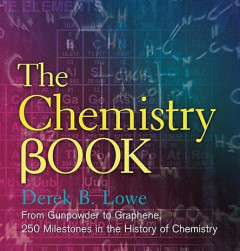
E-book The Chemistry Book: From Gunpowder to Graphene, 250 Milestones in the …
From atoms and fluorescent pigments to sulfa drug synthesis and buckyballs, this lush and authoritative chronology presents 250 milestones in the world of chemistry. As the "central science" that bridges biology and physics, chemistry plays an important role in countless medical and technological advances. Covering entertaining stories and unexpected applications, chemist and journalist Derek B…
- Edisi
- -
- ISBN/ISSN
- 9781454917281
- Deskripsi Fisik
- 811 halaman, ilus.
- Judul Seri
- -
- No. Panggil
- 540 LOW t
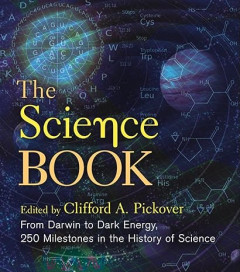
E-book The Science Book: From Darwin to Dark Energy, 250 Milestones in the Hi…
From astronomy to psychology, this beautifully illustrated chronology presents the most important and groundbreaking milestones in science. Award-winning author Cliff Pickover (The Math Book, The Physics Book, and The Medical Book) gathers into one fully illustrated volume the most important thinkers and ideas in the history of science. This unique omnibus edition includes 250 thoughtfu…
- Edisi
- -
- ISBN/ISSN
- 9781454933007
- Deskripsi Fisik
- 779 halaman, ilus.
- Judul Seri
- -
- No. Panggil
- 500.0 PIC t
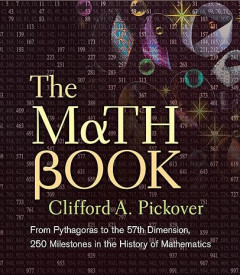
E-book The Math Book: From Pythagoras to the 57th Dimension, 250 Milestones i…
Beginning millions of years ago with ancient “ant odometers” and moving through time to our modern-day quest for new dimensions, The Math Book covers 250 milestones in mathematical history. Among the numerous delights readers will learn about as they dip into this inviting anthology: cicada-generated prime numbers, magic squares from centuries ago, the discovery of pi and calculus, and the …
- Edisi
- -
- ISBN/ISSN
- 9781402757969
- Deskripsi Fisik
- 534 halaman
- Judul Seri
- -
- No. Panggil
- 510 PIC t
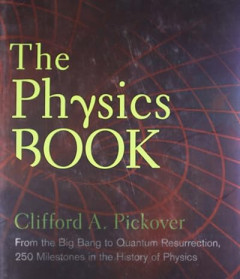
E-book The Physics Book: From the Big Bang to Quantum Resurrection, 250 Miles…
Following the hugely successful The Science Book and The Math Book comes a richly illustrated chronology of physics, containing 250 short, entertaining, and thought-provoking entries. In addition to exploring such engaging topics as dark energy, parallel universes, the Doppler effect, the God particle, and Maxwells demon, the books timeline extends back billions of years to the hypothetical Big…
- Edisi
- -
- ISBN/ISSN
- 9781402790997
- Deskripsi Fisik
- 606 halaman, ilus.
- Judul Seri
- -
- No. Panggil
- 530 PIC t
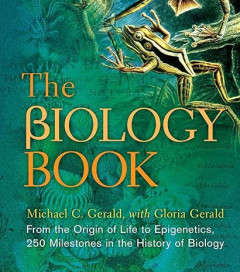
E-book The Biology Book: From the Origin of Life to Epigenetics, 250 Mileston…
From the emergence of life, to Leewenhoeks microscopic world, to GMO crops, The Biology Book presents 250 landmarks in the most widely studied scientific field. Brief, engaging, and colorfully illustrated synopses introduce readers to every major subdiscipline, including cell theory, genetics, evolution, physiology, thermodynamics, molecular biology, and ecology. With information on such varied…
- Edisi
- -
- ISBN/ISSN
- 9781454910688
- Deskripsi Fisik
- 566 halaman, ilus.
- Judul Seri
- -
- No. Panggil
- 570 GER t
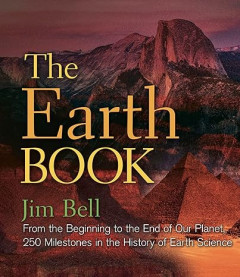
E-book The Earth Book: From the Beginning to the End of Our Planet, 250 Miles…
A beautifully illustrated presentation of 250 milestones in the history of our home planet, from a celebrated geologist and planetary scientist. Spanning Earth’s entire history, from its birth 4.6 billion years ago to its inevitable destruction billions of years into the future, this stunning volume chronicles the life of our home planet in 250 well-chosen milestones. Jim Bell leads us on …
- Edisi
- -
- ISBN/ISSN
- 9781454935551
- Deskripsi Fisik
- 573 halaman, ilus.
- Judul Seri
- -
- No. Panggil
- 551 BEL t
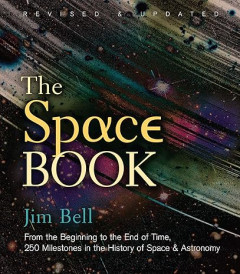
E-book The Space Book Revised and Updated: From the Beginning to the End of T…
Since the original edition of The Space Book was published in 2013, much has happened in the world of space exploration. This revised and updated edition, with a new introduction from author Jim Bell, brings the popular Milestones book up to date. It includes the most exciting and newsworthy breakthroughs, from the groundbreaking discovery of the Trappist-1 system to the technologies of the fut…
- Edisi
- -
- ISBN/ISSN
- 9781454935582
- Deskripsi Fisik
- 797 halaman, ilus.
- Judul Seri
- -
- No. Panggil
- 520 BEL t
E-book Time Predictions : Understanding and Avoiding Unrealism in Project Pla…
The time prediction and planning capacity of the human race is particularly evidentin some of the early great constructions. An excellent example is the building of theGreat Pyramid of Giza, around 4500 years ago. We do not know much about themethods they used to predict the time needed and how they managed to finish thepyramid before the pharaoh’s death. Most likely, their time and resource …
- Edisi
- -
- ISBN/ISSN
- 9783319749532
- Deskripsi Fisik
- 117 hlm
- Judul Seri
- -
- No. Panggil
- 519.2 HAL t
E-book Animal Communication Theory: Information and Influence
The explanation of animal communication by means of concepts like information, meaning and reference is one of the central foundational issues in animal behaviour studies. This book explores these issues, revolving around questions such as: what is the nature of information? What theoretical roles does information play in animal communication studies? Is it justified to employ these concepts in…
- Edisi
- -
- ISBN/ISSN
- 9781604130904
- Deskripsi Fisik
- 121 halaman, ilus.
- Judul Seri
- -
- No. Panggil
- 591.3 STE a
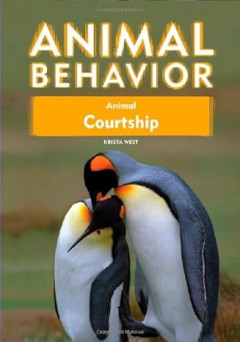
E-book Animal Courtship (Animal Behavior)
Explores the courtship behavior of different animals, including insects, fish, reptiles, birds, and mammals.
- Edisi
- -
- ISBN/ISSN
- 9781604130904
- Deskripsi Fisik
- 121 halaman, ilus.
- Judul Seri
- -
- No. Panggil
- 590 WES a
E-book The Secret Language of Animals: A Guide to Remarkable Behavior
- Edisi
- -
- ISBN/ISSN
- -
- Deskripsi Fisik
- 676 halaman
- Judul Seri
- -
- No. Panggil
- 590 BEN t
- Edisi
- -
- ISBN/ISSN
- -
- Deskripsi Fisik
- 676 halaman
- Judul Seri
- -
- No. Panggil
- 590 BEN t

E-book Encyclopedia of Dinosaurs and Prehistoric Life
A spectacularly illustrated, comprehensive guide to the prehistoric world and the plants and animals that lived there provides in-depth discussions of early Earth's climates and conditions, and the life forms that flourished and floundered throughout each era. Reprint.
- Edisi
- -
- ISBN/ISSN
- 9780756638368
- Deskripsi Fisik
- 378 halaman, ilus.
- Judul Seri
- -
- No. Panggil
- 567.9 BLO e
E-book Diffusionics : Diffusion Process Controlled by Diffusion Metamaterials
- Edisi
- -
- ISBN/ISSN
- 9789819704866
- Deskripsi Fisik
- 348 hlm
- Judul Seri
- -
- No. Panggil
- 536.7 YAN d
- Edisi
- -
- ISBN/ISSN
- 9789819704866
- Deskripsi Fisik
- 348 hlm
- Judul Seri
- -
- No. Panggil
- 536.7 YAN d
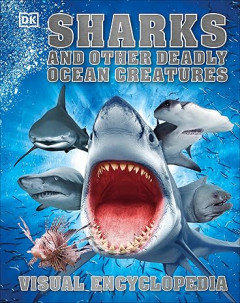
E-book Sharks and Other Deadly Ocean Creatures Visual Encyclopedia
- Edisi
- -
- ISBN/ISSN
- 9781465450845
- Deskripsi Fisik
- 208 halaman, ilus.
- Judul Seri
- -
- No. Panggil
- 567.2 DOR s
- Edisi
- -
- ISBN/ISSN
- 9781465450845
- Deskripsi Fisik
- 208 halaman, ilus.
- Judul Seri
- -
- No. Panggil
- 567.2 DOR s
E-book Remote Sensing of Plant Biodiversity
Improved detection and monitoring of biodiversity is critical at a time when Earth’s biodiversity loss due to human activities is accelerating at an unprecedented rate. We face the largest loss of biodiversity in human history, a loss which has been called the “sixth mass extinction” (Leakey 1996; Kolbert 2014), given that its mag-nitude is in proportion to past…
- Edisi
- -
- ISBN/ISSN
- 9783030331573
- Deskripsi Fisik
- 594 hlm
- Judul Seri
- -
- No. Panggil
- 580 ADE r
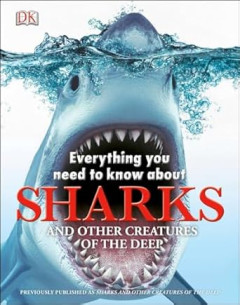
E-book Everything You Need to Know About Sharks
With over 200 photographs and illustrations, plus quizzes, maps and an index and glossary, the surprising secrets of sharks and how and where they live plus amazing facts about other creatures of the deep such as whales, octopus, jellyfish and eels are revealed in Everything You Need to Know about Sharks.
- Edisi
- -
- ISBN/ISSN
- 9780756698812
- Deskripsi Fisik
- 82 halaman, ilus.
- Judul Seri
- -
- No. Panggil
- 567.2 DOR e
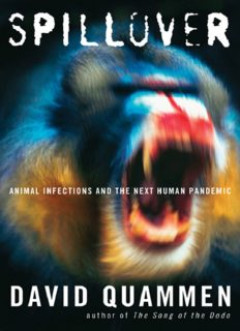
E-book Spillover: Animal Infections and the Next Human Pandemic
The emergence of strange new diseases is a frightening problem that seems to be getting worse. In this age of speedy travel, it threatens a worldwide pandemic. We hear news reports of Ebola, SARS, AIDS, and something called Hendra killing horses and people in Australia?but those reports miss the big truth that such phenomena are part of a single pattern. The bugs that transmit these diseases sh…
- Edisi
- -
- ISBN/ISSN
- 9780393066807
- Deskripsi Fisik
- 485 halaman
- Judul Seri
- -
- No. Panggil
- 571.9 QUA s
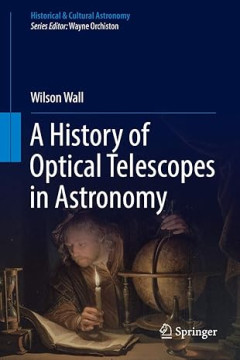
E-book A History of Optical Telescopes in Astronomy (Historical & Cultural As…
This book is uniquely about the relationship between the optical telescope and astronomy as they developed together. It covers the time between the telescope's pivotal invention in the 1600's up to the modern era of space-based telescopes. Over the intervening centuries, there were huge improvements in the optical resolution of telescopes, along with changes in their positioning and nature of a…
- Edisi
- -
- ISBN/ISSN
- 9783319990873
- Deskripsi Fisik
- 181 halaman, ilus.
- Judul Seri
- -
- No. Panggil
- 522.2 WAL a

E-book Do Colors Exist?: And Other Profound Physics Questions
Why do polished stones look wet? How does the Twin Paradox work? What if Jupiter were a star? How can we be sure that pi never repeats? How does a quantum computer break encryption? Discover the answers to these, and other profound physics questions! This fascinating book presents a collection of articles based on conversations and correspondences between the author and complete strangers ab…
- Edisi
- -
- ISBN/ISSN
- 9783319643601
- Deskripsi Fisik
- 286 halaman
- Judul Seri
- -
- No. Panggil
- 530.1 COT d
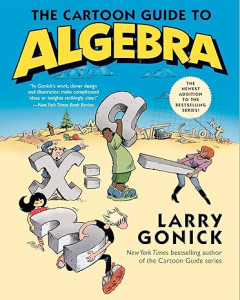
E-book The Cartoon Guide to Algebra
In this latest edition of the successful Cartoon Guide series, master cartoonist and former Harvard instructor Larry Gonick offers a complete and up-to-date illustrated course to help students understand and learn this core mathematical course taught in American schools. Using engaging graphics and lively humor, Gonick covers all of the algebra essentials, including linear equations, polynom…
- Edisi
- -
- ISBN/ISSN
- 9780062202697
- Deskripsi Fisik
- 241 halaman
- Judul Seri
- -
- No. Panggil
- 512 GON t
E-book For the Love of Physics: From the End of the Rainbow to the Edge of Ti…
“A delightful scientific memoir combined with a memorable introduction to physics” from the legendary MIT lecturer and surprise YouTube celebrity (Kirkus Reviews). For more than thirty years as a renowned professor at the Massachusetts Institute of Technology, Walter Lewin’s lectures made physics not only accessible but fun, whether putting his head in the path of a wrecking ball, supe…
- Edisi
- -
- ISBN/ISSN
- 9781439123546
- Deskripsi Fisik
- 300 halaman
- Judul Seri
- -
- No. Panggil
- 530.092 LEW f
E-book Did You Know? Science: Amazing Answers to More than 200 Awesome Questi…
What is science? Science helps us to answer questions. If we look for evidence and do experiments to terst new ideas, we can understand how and why things work. We divide science into three main areas: chemistry, biology, and physics.
- Edisi
- -
- ISBN/ISSN
- 9781465469328
- Deskripsi Fisik
- 146 halaman, ilus.
- Judul Seri
- -
- No. Panggil
- 501 DOD d

E-book CRC World Dictionary of Palms: Common Names, Scientific Names, Eponyms…
Umberto Quattrocchi has brought us some amazing and useful works through the various dictionaries that he has compiled. This time it is for two very important plant families the palms and the cycads that are synthesized here in these two volumes. Each entry is fascinating not just for the botany and full nomenclature of the plant species but for all the associated uses, folklore and interaction…
- Edisi
- -
- ISBN/ISSN
- 9781498782791
- Deskripsi Fisik
- 2011 halaman
- Judul Seri
- -
- No. Panggil
- 580.3 QUA c

E-book CRC World Dictionary of Grasses: Common Names, Scientific Names, Epony…
2008 NOMINEE The Council on Botanical and Horticultural Libraries Annual Award for a Significant Work in Botanical or Horticultural Literature now we have easier and better access to grass data than ever before in human history. That is a marked step forward. Congratulazioni Professor Quattrocchi!-Daniel F. Austin, writing in Economic Botany &n
- Edisi
- -
- ISBN/ISSN
- 9780849313035
- Deskripsi Fisik
- 2402 halaman
- Judul Seri
- -
- No. Panggil
- 582.12 QUA c
E-book Magnetic Hybrid-Materials : Multi-scale Modelling, Synthesis, and Appl…
The design of hybrid materials that can be manipulated by magnetic fields is possibleby incorporating inorganic magnetic nanoobjects into complex soft matrices such asgels [1], elastomers [2], liquid crystals [3], or biologicalfluids [4] in a predeterminedway. A proper setup allows the application of external magneticfields to either analyzeor alter the material properties of such systems on a …
- Edisi
- -
- ISBN/ISSN
- 9783110569636
- Deskripsi Fisik
- 813 hlm
- Judul Seri
- -
- No. Panggil
- 532 ALE m

E-book CRC World Dictionary of Medicinal and Poisonous Plants: Common Names, …
The CRC World Dictionary of Medicinal and Poisonous Plants: Common Names, Scientific Names, Eponyms, Synonyms, and Etymology provides the starting point for better access to data on plants used around the world in medicine, food, and cultural practices. The material found in the five volumes has been painstakingly gathered from papers of general interest, reports and records, taxonomic revision…
- Edisi
- -
- ISBN/ISSN
- 9781420080445
- Deskripsi Fisik
- 4038 halaman
- Judul Seri
- -
- No. Panggil
- 582.12 QUA c
E-book Application of Molecular Methods and Raman Microscopy : Spectroscopy i…
Climate change is one of the most serious problems facing the agriculture today. In a many countries, drought in conjunction with high temperature becomes a significant risk for sustainable agricultural production. In general, drought stress limits productivity of major crops by inducing different morphological, physiological and molecular changes in plants (Ashraf et al. 201…
- Edisi
- -
- ISBN/ISSN
- 9781911529521
- Deskripsi Fisik
- 219 hlm
- Judul Seri
- -
- No. Panggil
- 572 PET a
E-book Changing Seasonality : How Communities are Revising their Seasons
Planetary scientists suspect that, when young, our planet met with an enormouscelestial body in a random collision that tilted the earth’s rotational axis relativeto its orbital plane around the sun. This tilt has since determined which parts ofour globe are most exposed to solar radiation at different points in its solar cir-cuit, as a key physical pattern dictating the annual cycles of life…
- Edisi
- -
- ISBN/ISSN
- 9783111245591
- Deskripsi Fisik
- 269 hlm
- Judul Seri
- -
- No. Panggil
- 529 BRE c
E-book The Phenomenon of Rat : Mouse-like Body Structure in Mammals
When using the terms mice and rats, we usually mean small ani-mals with a long scaly tail. These names are applied mainly to rodents, but not exclusively. In various languages, shrews are also called mice (e.g. German Spitzmäuse), as are bats and some marsu-pials (marsupial mice). Even one carnivore, the Egyptian mongoose (Herpestes ichneumon), is also called Waoh’s rat. First of all, it wou…
- Edisi
- -
- ISBN/ISSN
- 9789916273166
- Deskripsi Fisik
- 269 hlm
- Judul Seri
- -
- No. Panggil
- 599.3 MIL t
E-book Nature Guiding
One of the difficulties in the establishment of nature-study has been that there is no field for the work. This is no longer true. There is an awakening throughout the country. 1. Summer Camps need Nature Counsellors. It is admitted that nature lore is the most important and the most difficult position to fill in the summer camp. There are over 5000 camps. 2. Scouting and Camp Fire Organiz…
- Edisi
- -
- ISBN/ISSN
- 9781501740862
- Deskripsi Fisik
- -
- Judul Seri
- -
- No. Panggil
- 570 VIN n
E-book Rivers of the Anthropocene
“There was no such thing as the Scientific Revolution, and this is a book about it” (Shapin 1996, 1). So began Stephen Shapin’s The Scientific Revolution, a work, con-cise and smart, that embodied an approach to the history of science termed “the social construction of science.” Shapin argued that if we are going to talk about a “scientific revolution,” then we need to see it not …
- Edisi
- -
- ISBN/ISSN
- 9780520967939
- Deskripsi Fisik
- 244 hlm
- Judul Seri
- -
- No. Panggil
- 550 BEN r
E-book The Wheat Genome
In 2018, the International Wheat Genome Sequencing Consortium published a reference genome sequence for bread wheat (Triticum aestivum L.). The landmark achievement was the culmination of a thirteen-year international effort focused on the production of a genome sequence linked to genotypic/phenotypic maps to advance understanding of traits an…
- Edisi
- -
- ISBN/ISSN
- 9783031382949
- Deskripsi Fisik
- 328 hlm
- Judul Seri
- -
- No. Panggil
- 580 ROG t
E-book Animals and Medicine : The Contribution of Animal Experiments to the C…
The Research Defence Society (RDS) was founded in 1908 by Dr Stephen Paget, son of the eminent Victorian surgeon, Sir James Paget. Its role was to defend scientists conducting medical research using animals and to inform the public about the importance of animal experimentation. In its first year it attracted a membership of 2000 which included scientists in th…
- Edisi
- -
- ISBN/ISSN
- 9781783741199
- Deskripsi Fisik
- 246 hlm
- Judul Seri
- -
- No. Panggil
- 590.7 BOT a
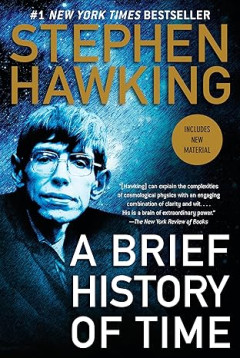
E-book A Brief History of Time
A landmark volume in science writing by one of the great minds of our time, Stephen Hawking’s book explores such profound questions as: How did the universe begin—and what made its start possible? Does time always flow forward? Is the universe unending—or are there boundaries? Are there other dimensions in space? What will happen when it all ends? Told in language we all can understand…
- Edisi
- -
- ISBN/ISSN
- 9780553896923
- Deskripsi Fisik
- 185 halaman
- Judul Seri
- -
- No. Panggil
- 523.1 HAW a
E-book The Square Kilometre Array : A Science Mega-Project in the Making, 199…
This is a book about a grand vision radio telescope project called the Square Kilometre Array (SKA) and its transition from a global grass-roots collaboration among astronomers and engineers in the early 1990s to a formal legal entity two decades later, on the path towards an Inter-Governmental Organisation constructing a science mega-project. The …
- Edisi
- -
- ISBN/ISSN
- 9783031513749
- Deskripsi Fisik
- 645 hlm
- Judul Seri
- -
- No. Panggil
- 522.6 SCH t
E-book Mercury Pollution in Minamata
In July 2012, I was employed as a program-specific professor to implement the “Connectivity of Hills, Humans and Oceans Educational Program” which was opened to all graduate students of Kyoto University. In 2010 when I worked at the National Research Institute of Aquaculture, I visited the Minamata Disease Municipal Museum in south Kyushu. There, I learned d…
- Edisi
- -
- ISBN/ISSN
- 9789811073922
- Deskripsi Fisik
- 74 hlm
- Judul Seri
- -
- No. Panggil
- 546.6 YOK m
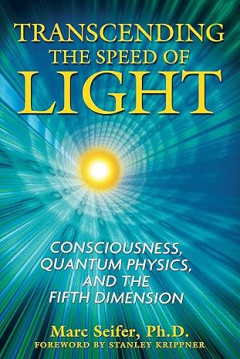
E-book Transcending the Speed of Light: Consciousness, Quantum Physics, and t…
A study of the new scientific understanding of consciousness and the mind as a fifth dimension of reality • Introduces the existence of a fifth dimension--one of mind--an inner- or hyperspace where time is transcended • Shows how the barrier of the speed of light is actually a gateway demarking the fifth dimension Since the introduction of Descartes’ dualism in the seventeenth ce…
- Edisi
- -
- ISBN/ISSN
- -
- Deskripsi Fisik
- 350 halaman
- Judul Seri
- -
- No. Panggil
- 530.12 SEI t

E-book Hidden Dimensions: The Unification of Physics and Consciousness (Colum…
Bridging the gap between the world of science and the realm of the spiritual, B. Alan Wallace introduces a natural theory of human consciousness that has its roots in contemporary physics and Buddhism. Wallace's "special theory of ontological relativity" suggests that mental phenomena are conditioned by the brain, but do not emerge from it. Rather, the entire natural world of mind and matter, s…
- Edisi
- -
- ISBN/ISSN
- 9780231141512
- Deskripsi Fisik
- 173 halaman
- Judul Seri
- -
- No. Panggil
- 530.12 WAL h
E-book Biodiversity of Angola : Science & Conservation: A Modern Synthesis
Angola is a country of unusually rich physiographic, climatic and biological diver-sity. It occupies only 4% of the terrestrial area of Africa, yet it possesses the highest diversity of biomes and is second only to mega-diverse South Africa in terms of the number of ecoregions found within its borders. However, scientific literature on its biodiversity is extremely limited when compared w…
- Edisi
- -
- ISBN/ISSN
- 9783030030834
- Deskripsi Fisik
- 552 hlm
- Judul Seri
- -
- No. Panggil
- 577.82 BAP b
E-book Vital Reenchantments: Biophilia, Gaia, Cosmos, and the Affectively Eco…
Not all charms fly at the touch of cold philosophy.1 This work examines so-called “cold philosophy,” or science, that does pre-cisely the opposite—rather than mercilessly emptying out and unweaving, it operates as a philosophy that animates. Taking up a selection of popular works by scientists who have engaged in attempts to rail against the idea of disenchantment (En…
- Edisi
- -
- ISBN/ISSN
- 9781950192083
- Deskripsi Fisik
- 278 hlm
- Judul Seri
- -
- No. Panggil
- 501 GRE v
E-book Louisiana's Response to Extreme Weather : A Coastal State's Adaptation…
The coastal areas of Louisiana have been subject to extreme weather ever since the Mississippi River began to create the Delta land 7000+ years ago (Roberts 1997). The extreme weather first impacted the indigenous population that has lived here for millennia and, over the last 300+ years, multi-ethnic immigrants, refugees and enslaved peoples who settled among them (Owens 2015). Whil…
- Edisi
- -
- ISBN/ISSN
- 9783030272050
- Deskripsi Fisik
- 364 hlm
- Judul Seri
- -
- No. Panggil
- 551.45 LAS l
E-book Illustrated Pollen Terminology
During the first half of the nineteenth century, some fundamental insights into pollen morphology and physiology were achieved. Purkinje made the first attempt for a palynological terminology by classifying pollen based on their morphology (Purkinje 1830). Wodehouse (1935) pointed out that “Purkinje’s system of nomenclature deserved much more attention than was ever given …
- Edisi
- -
- ISBN/ISSN
- 9783319713656
- Deskripsi Fisik
- 483 hlm
- Judul Seri
- -
- No. Panggil
- 580 HAL i
E-book Biodeterioration of Cultural Heritage : Dynamic Interfaces between Fun…
Biodeterioration in the context of cultural heritage refers to the degradationprocesses induced by microorganisms that occur in various substrates upon whichhistoric and artistic works of our cultural heritage were created. Paper, a biological,cellular material that has served for centuries as a carrier of human thought, and abase upon which artworks were rendered, is a particularly bio-suscept…
- Edisi
- -
- ISBN/ISSN
- 9783036520933
- Deskripsi Fisik
- 186 hlm
- Judul Seri
- -
- No. Panggil
- 579.5 SZC b
E-book The Big Picture: On the Origins of Life, Meaning, and the Universe Itself
Already internationally acclaimed for his elegant, lucid writing on the most challenging notions in modern physics, Sean Carroll is emerging as one of the greatest humanist thinkers of his generation as he brings his extraordinary intellect to bear not only on the Higgs boson and extra dimensions but now also on our deepest personal questions. Where are we? Who are we? Are our emotions, our bel…
- Edisi
- -
- ISBN/ISSN
- 9781780746067
- Deskripsi Fisik
- 467 halaman
- Judul Seri
- -
- No. Panggil
- 523.1 CAR t
E-book Inorganic Constituents in Soil : Basics and Visuals
Concentrations of more than 50 soil elements can now be determined by atomicabsorption photometry, X-rayfluorescence spectrometry, inductively coupledplasma mass spectrometry, and other techniques (Yamasaki1996, Takeda et al.2004). Concentrations of the major soil elements, Si, Al, Fe, Ca, Mg, Na, K, Mn, Ti,and P, are frequently measured. Other major elements, O, H, C, N, S, F, and Cl, existin …
- Edisi
- -
- ISBN/ISSN
- 9789811312144
- Deskripsi Fisik
- 188 hlm
- Judul Seri
- -
- No. Panggil
- 543.5 MAS i
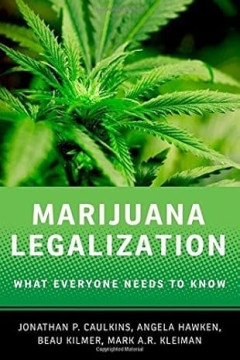
E-book Marijuana Legalization: What Everyone Needs to Know
Should we legalize marijuana? If we legalize, what in particular should be legal? Just possessing marijuana and growing your own? Selling and advertising? If selling becomes legal, who gets to sell? Corporations? Co-ops? The government? What regulations should apply? How high should taxes be? Different forms of legalization could bring very different results. This second edition of Marijuana…
- Edisi
- -
- ISBN/ISSN
- 9780199913718
- Deskripsi Fisik
- 287 halaman
- Judul Seri
- -
- No. Panggil
- 583.4 CAU m
 Karya Umum
Karya Umum  Filsafat
Filsafat  Agama
Agama  Ilmu-ilmu Sosial
Ilmu-ilmu Sosial  Bahasa
Bahasa  Ilmu-ilmu Murni
Ilmu-ilmu Murni  Ilmu-ilmu Terapan
Ilmu-ilmu Terapan  Kesenian, Hiburan, dan Olahraga
Kesenian, Hiburan, dan Olahraga  Kesusastraan
Kesusastraan  Geografi dan Sejarah
Geografi dan Sejarah